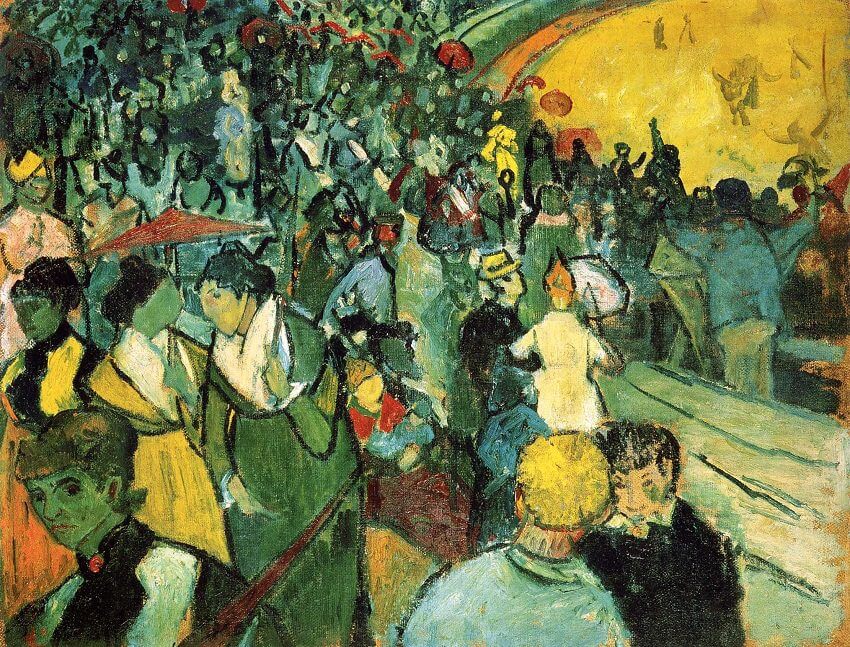The Arena at Arles, 1888 by Vincent Van Gogh

The history of Arles stretches back to around the sixth century BC when it was established by the Greeks, and in 123 BC it was taken over by the Romans under whose direction it becomes an important city. Remnants of the town's ancient past, including its amphitheater, Roman theater and Necropolis (the Alyscamps), are still scattered through the area, and it is the area or amphitheater that Van Gogh has depicted here. The area itself is not that evident at first glance, being tucked away in the top corner, what is more striking is the group of milling figures that crush into the foreground. The whole painting has an atmosphere of jittery activity, and the sketchy figures are drawn in the middle distance, and background compound this sense of motion.
Van Gogh used a similar approach in another painting done at around the same time as the dancehall at Arles. This second work is more highly finished, and reflects the influence of Gauguin to a greater degree, and Indeed the dancehall was one of Gauguin's haunts while he was staging with Van Gogh,




















